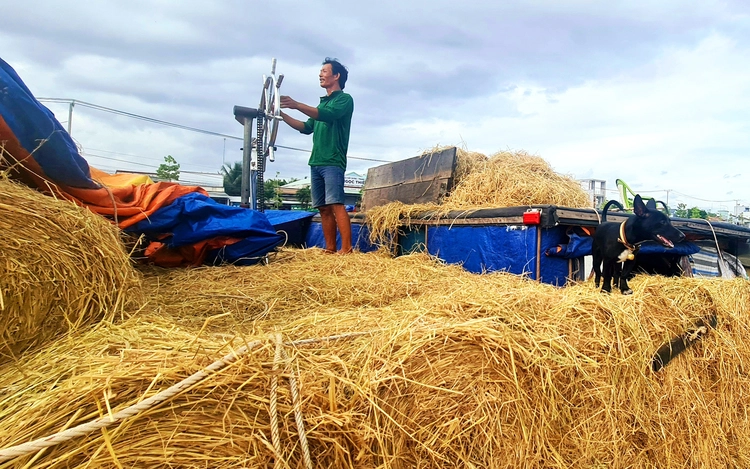
A river trader steers his wooden cargo boat loaded with straw in the Mekong Delta, southern Vietnam. Photo: Tuoi Tre
As the skies shifted between sun and sudden showers in Vietnam’s Mekong Delta, Nguyen Van Hai — known on the river as Nam Hai — scrambled to cover nearly 2,000 rolls of straw aboard his wooden cargo boat, making its slow journey from Dong Thap Province to Cho Gao District in Tien Giang Province.
Dark clouds churned above, but his brow eased as word arrived that traders were waiting at the riverside to buy straw.
Along with Nam Hai and his wife, several other boats headed in the same direction, toward a riverside area near Kinh Ngang Bridge.
Here, middlemen wait to buy straw to resell to cattle farmers, mushroom growers, vegetable producers — or compress into bales for export.
On good days, if they arrive during peak demand, thousands of bulky straw rolls from a few large boats can sell within one or two days. But it is not always so smooth.
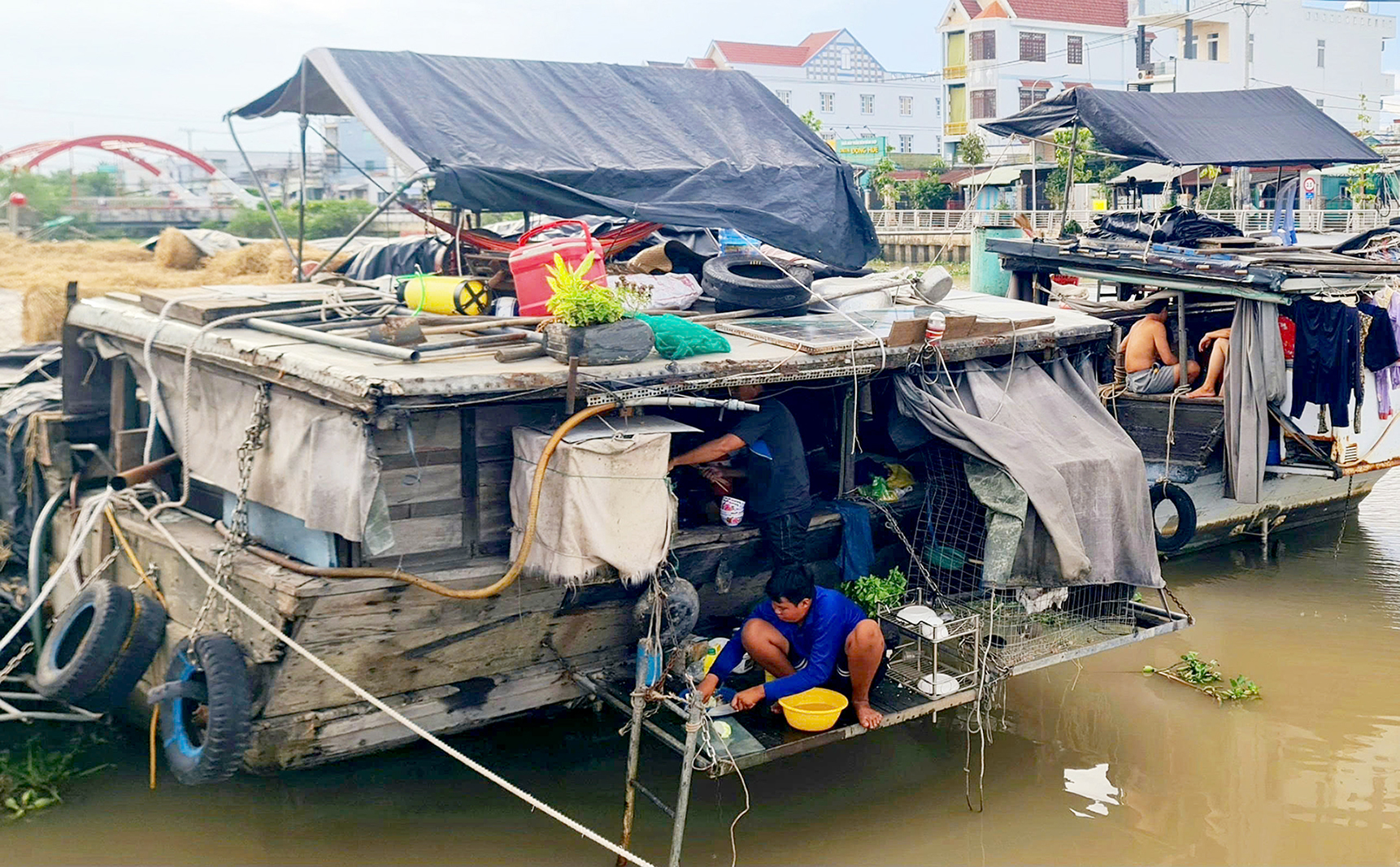
River traders go about their daily routines aboard their boats in the Mekong Delta, southern Vietnam. Photo: Tuoi Tre
“There are a few things that scare us in this trade,” said Nguyen Van Den, another trader who follows the straw seasons in Tam Vu Town, Long An Province.
“When it rains, straw gets heavy and loses value.
“When it’s too hot, it dries out and becomes a fire hazard.
“We have to be careful with every step.”
From rice to straw
By late afternoon, Nam Hai — a tanned, nearly-60-year-old trader with decades on the water — finally exhaled after selling over 600 straw rolls.
He walked from stern to bow with his loyal black dog in tow, checking the remaining load.
He then hung a hammock at the helm, resting while catching the river breeze.
The dog lied nearby, tongue out, eyes scanning the shore for strangers.
“This silly mutt is actually quite helpful,” Hai laughed.
“He’s like my bodyguard.”
He recalled other traders falling asleep and getting their cash or phones stolen.
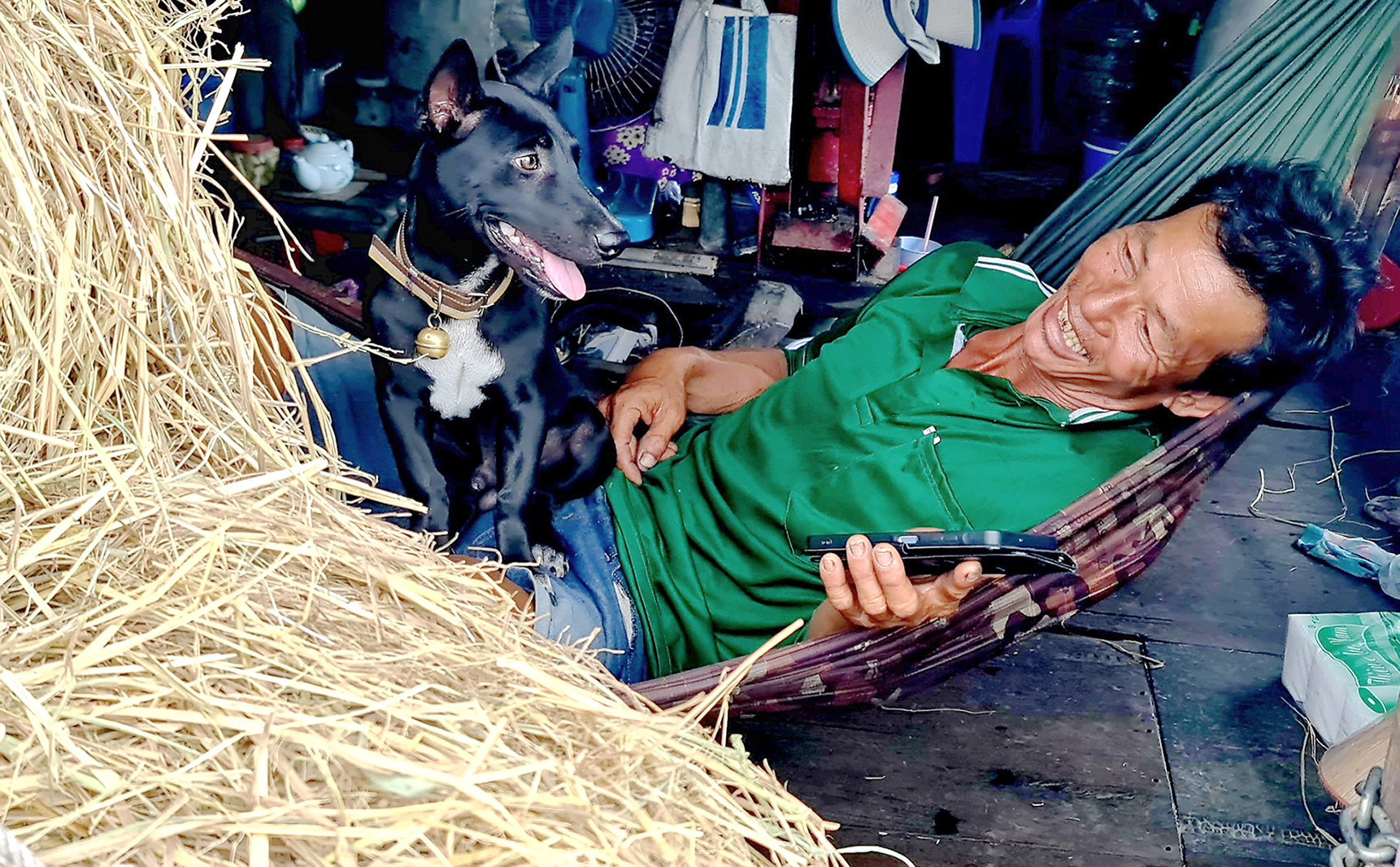
Nguyen Van Hai — known on the river as Nam Hai — rests in a hammock at the helm of his boat with his black dog, often described as his trusted bodyguard. Photo: Quoc Minh
The biggest fear, though, is fire — especially when a boat loaded with dry straw is moored near careless smokers.
He has seen boats burn down beyond saving, even while floating on water.
Born in Tan Hong District in Dong Thap, Hai’s family made a living growing rice before shifting to rice trading by boat.
At 18, he was already navigating the delta’s waterways.
He once worked transporting construction sand, but gave it up when regulations tightened.
As mushroom farming expanded and pastureland for cattle shrank, he switched to trading straw.

Wherever Nam Hai goes, his black dog follows closely. Photo: Quoc Minh
“I know the Dong Thap area well, so I source straw there,” he said.
“Depending on the season and weather, each dry roll weighs nearly 20 kilograms and sells at the field for around VND18,000-20,000 [US$0.7–0.8].
“We earn a few thousand dong in profit per roll, but have to deduct VND1,000 [$0.04] for loading fees.”
Prices can peak between VND30,000 ($1.15) and VND35,000 ($1.35) in September and October, or drop to just VND17,000-18,000.
His wooden boat, almost 30 years old but still sturdy, carries over 50 tons.
He and his wife recently bought it from another trader who gave up the river life.
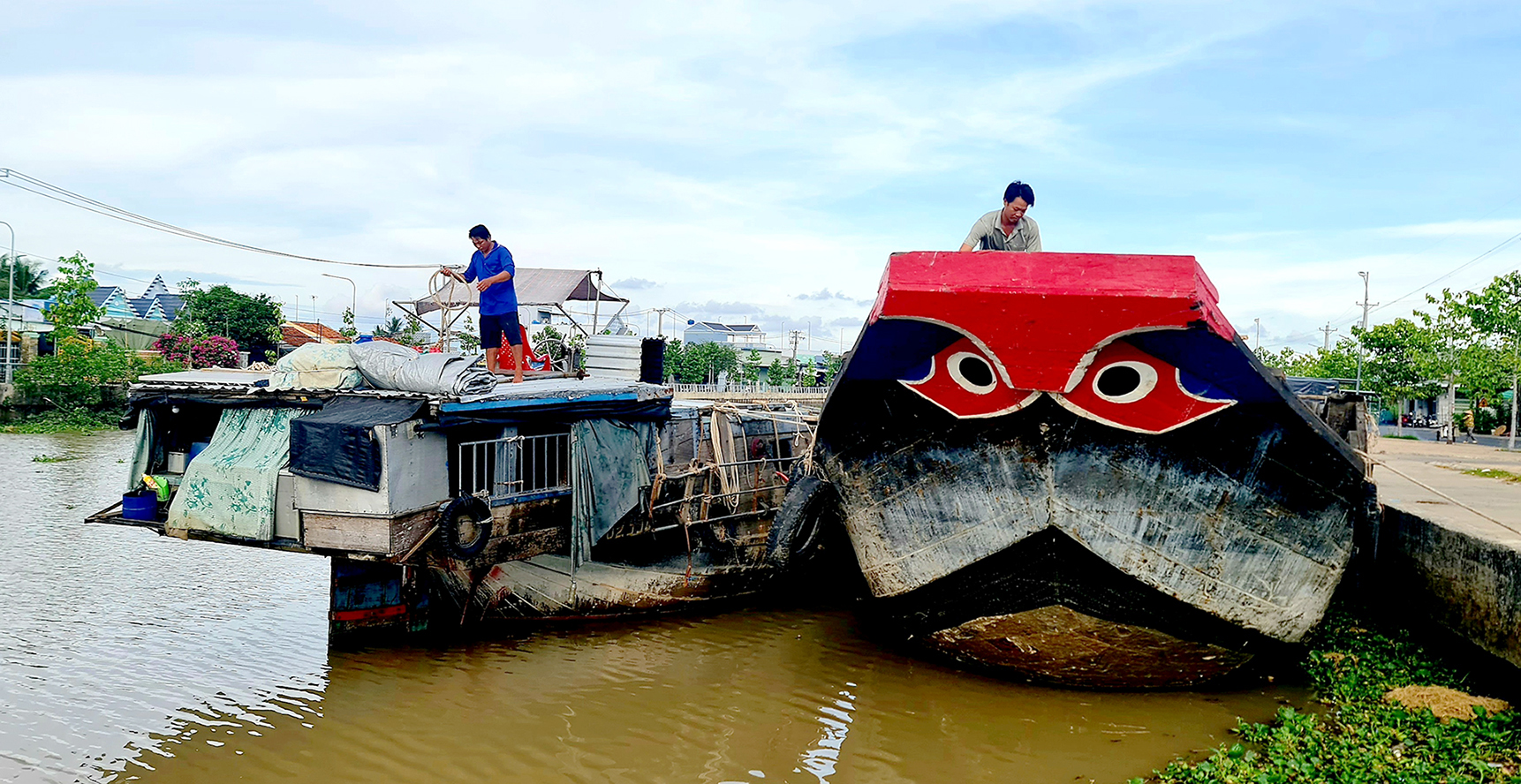
Boats that have sold out prepare to leave the Cho Gao dock in Tien Giang Province, southern Vietnam. Photo: Tuoi Tre
Each trip, they haul 1,800-2,000 rolls — managing nearly everything themselves.
“Oh right, I forgot the mutt — that makes three workers!” Hai laughed, pointing to the dog, tongue still out and eyes still alert.
They have mastered their roles: Hai at the helm, his wife handling meals, sales, and finances.
For the heavy lifting, they hire young men at each stop.
Waiting on the river
As evening falled near Kinh Ngang Bridge in Cho Gao, several straw-laden boats were docked.
Some had sold out and prepared for the next trip. Others were still waiting for buyers.
Younger traders were gathering around makeshift tables with wild banana wine and roast duck.
Though Hai normally does not drink, he joined for idle chatter to pass the time in this lonely, drifting life far from home.

Traders who have not sold all their straw gather by the riverside to drink wild banana wine and share stories, easing their homesickness. Photo: Tuoi Tre
Talk among old and young boat people often circles back to one thing: homesickness.
“I miss home terribly, but we have to keep going — for a living,” many say.
Since February, Hai and his wife had not returned home.
Even those with shorter runs had been away for one or two months.
Bay Thao, nearly 50, from Hong Ngu District in Dong Thap, joked with his son who threatened to “tell mom that dad’s drinking.”
He said that while rice grows by season, straw trading happens year-round — thanks to stockpiling — and that rainy days often drive demand.
“Some trips, we sell out in two or three days. Other times, we’re stuck for ten days or even two weeks. That’s business,” he shrugged.

Straw-laden boats wait for buyers at the Cho Gao dock in Tien Giang Province, southern Vietnam. Photo: Quoc Minh
These days, more people are entering the straw trade, making sales slower and debts more common.
Profits vary. On a good trip, Hai might earn VND5-10 million ($192–384).
If straw sells quickly, earnings can be higher by the traders cutting down on daily expenses.
He estimates that in a lucky year, he could clear over VND100 million ($3,840) after costs — a better return, he said, than tending a few hectares of rice paddies, which he does not even own.
The next generation of river life
Despite the relative profits, many traders feel the weight of their children’s sacrifices.
Young ones often live on the boat in cramped cabins.
Older kids stay on land for school, separated from parents for months.
Nguyen Van Den, the trader who follows the straw seasons in Tam Vu, notes a trend: river life becomes inherited.
“Some kids end up back on boats, just like their parents — and their kids may face the same hardships.”
Even Nam Hai has a son now working a straw boat, following in his father’s wake.


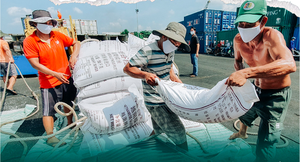
Max: 1500 characters
There are no comments yet. Be the first to comment.